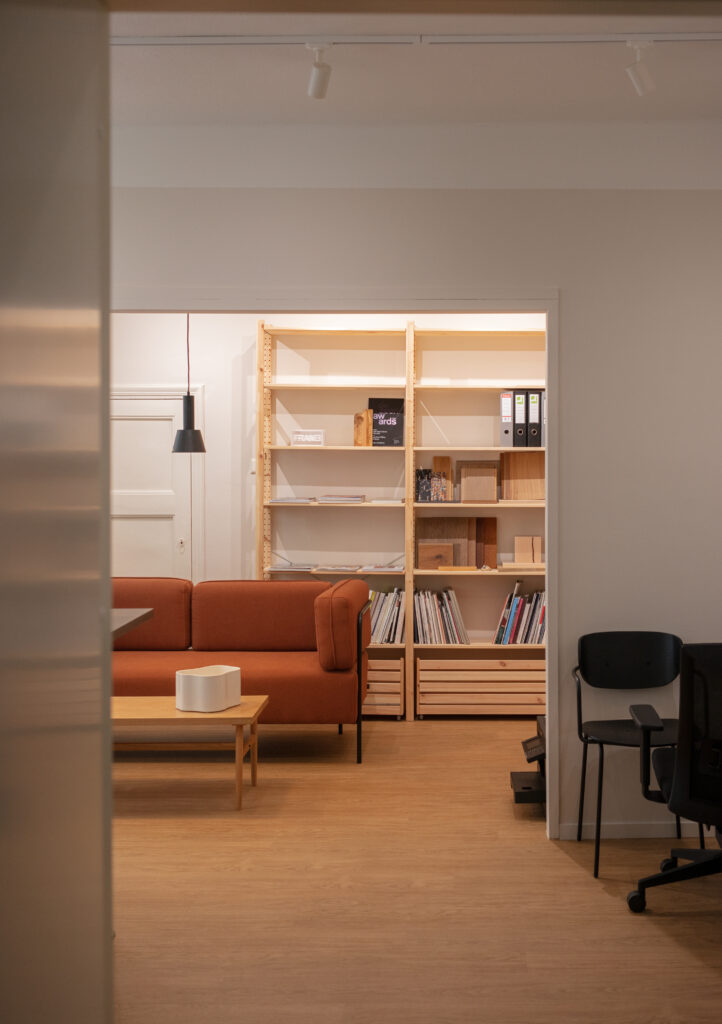
The founders of Yatofu did not want to spend too much time thinking about the studio name
Weekly visits Angela Lindahl and Yihan Xiang of Yatofu to talk about the importance of a good sense of humour, the value of research and bringing Nordic values to China one project at a time.
First things first, can you explain the studio’s name?
Angela: We get asked about this a lot and people always expect a profound answer. We started our studio in a hurry because we had been doing freelance projects—during our MA studies—and then a good opportunity came along that meant we decided to start a business. We thought about common interests: we both like eating, we both like eating tofu. My name starts with an ‘A’ and Yihan’s with a ‘Y’, so it’s a mash-up of those three things.
I had a suspicion it was something like that. It’s very SEO-friendly!
Angela: Well, we both have a strong sense of humour, so that comes through in the name. We also didn’t want to spend too much time thinking about it, and finally, we have a large client base in China so we wanted a name that everyone could pronounce.

You met while studying for a Masters of Interior Architecture at Aalto in Helsinki. I’m curious as to what kind of conversations led you to decide to remain in Helsinki and to start a practice together in 2017?
Angela: It wasn’t so much that we had in-depth conversations about the future and then decided to work together, but instead everything happened very organically. First we studied together, then we worked together as classmates, and through that process we became friends. Yihan was approached to work on a project in China and, because we were both studying at the time and were busy with dissertations, he asked me to help when he realised that he couldn’t take the work alone. Because we had already worked together, we knew that we worked well together and also that we enjoyed working together. We also have a similar outlook in terms of lifestyle. We both appreciate living in Finland, especially the slower pace of life and the importance of work-life balance, so it also felt quite natural to stay in Helsinki.
Yihan: In the beginning, I think our initial idea was probably a little naive. As students, you don’t learn how to set up a company and we went through those stages very organically, through trial and error. We learned a lot along the way and now we are working on different kinds of projects which is very exciting. When we first became friends, we realised that we both wanted to have our own practice. Not that many people have this same attitude or appetite for risk to set up a studio right after graduation.
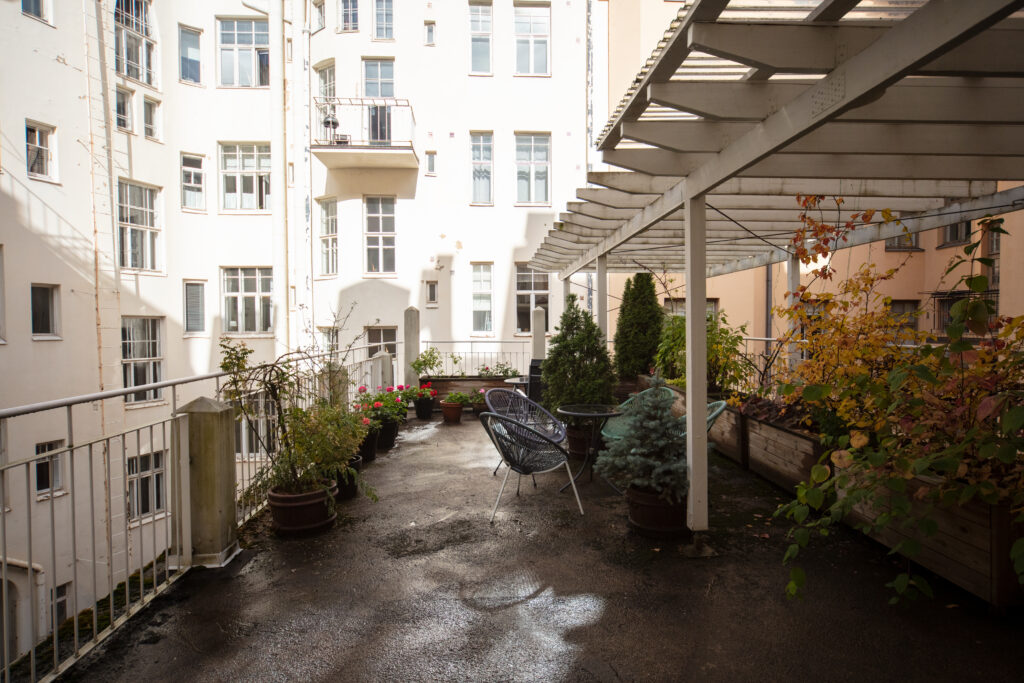
How do you divide up work? Does one of you lead on each new project, or are you both control freaks who need to be involved in everything? And you also now have an office in Shanghai. How does that fit in?
Angela: In the beginning, we both worked on every aspect which was necessary in the early days as we were still figuring out who was good at what. In Shanghai, we have one partner managing the office. And then we bring on different freelancers or subcontractors depending on projects and their needs. For every project, it will always be me or Yihan managing, but we now work so that one leads and the other supports when necessary. I think we are control freaks, but only in terms of project details. We don’t control how each other or our subcontractors work. We’re control freaks for quality control, but not ways of working.
Yihan: We are super precise in terms of quality output. When we deliver drawings, for example, we often get comments and compliments, especially in Finland, about how detailed they are. Again, that’s a reflection of our desire for quality control rather than control for control’s sake. It’s important to get the feeling or emotional connection that we want with a project and to get that you have to be able to clearly communicate your expectations with others who work on the project.
Yihan Xiang
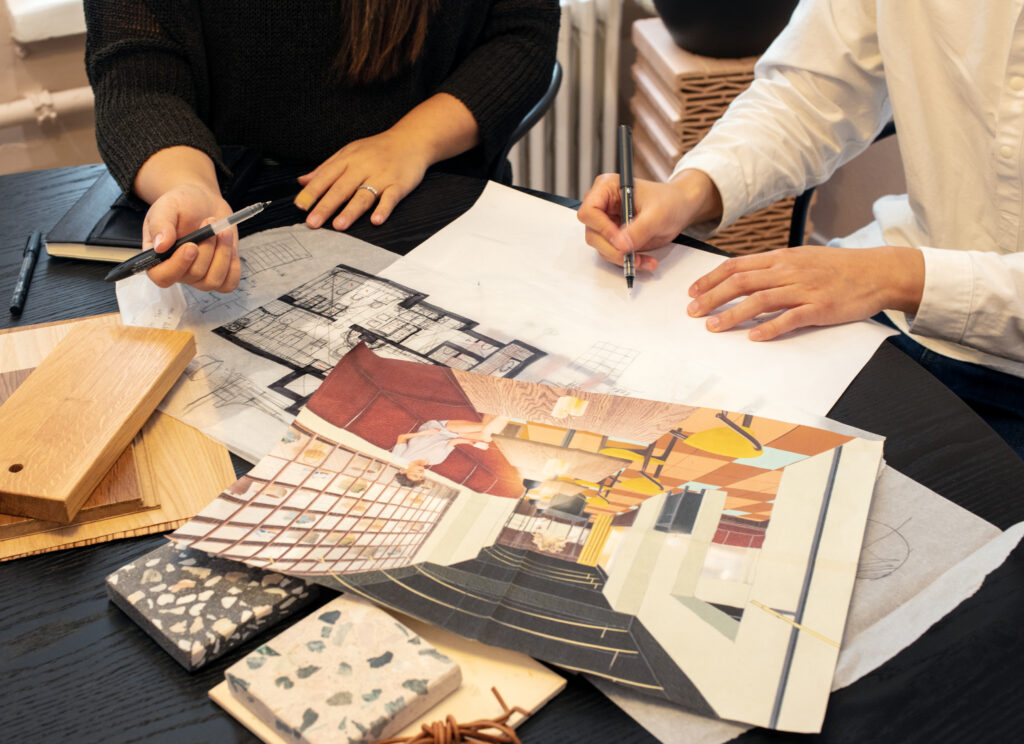
I know that contextual and historical research is a very important part of your design process. Could you say a bit more about how this works in practice, maybe with reference to a particular project?
Angela: We always start with a discovery phase. Many of our projects are more commercial, retail or hospitality, and so either we look into the historical background, the cultural context or the local context or some combination of all of those things. For Teemaa Tea House, for example, we first had a conversation with the owners about their business and sourcing methods. So, our research is usually initially inspired by something that the clients have said.
Another project, the Bund Post Office in Ningbo, started with a site visit to the area and then we dug more deeply into the significance of the post office there as it was one of the first post offices established in China. These stories inspire us, but they also dictate the more aesthetic choices we make that people traditionally identify with interior design. We don’t want to be tied down by one aesthetic style. We like to discover through our work and keep ourselves interested and engaged. It’s also how we produce work that makes the most sense for the client, as well.
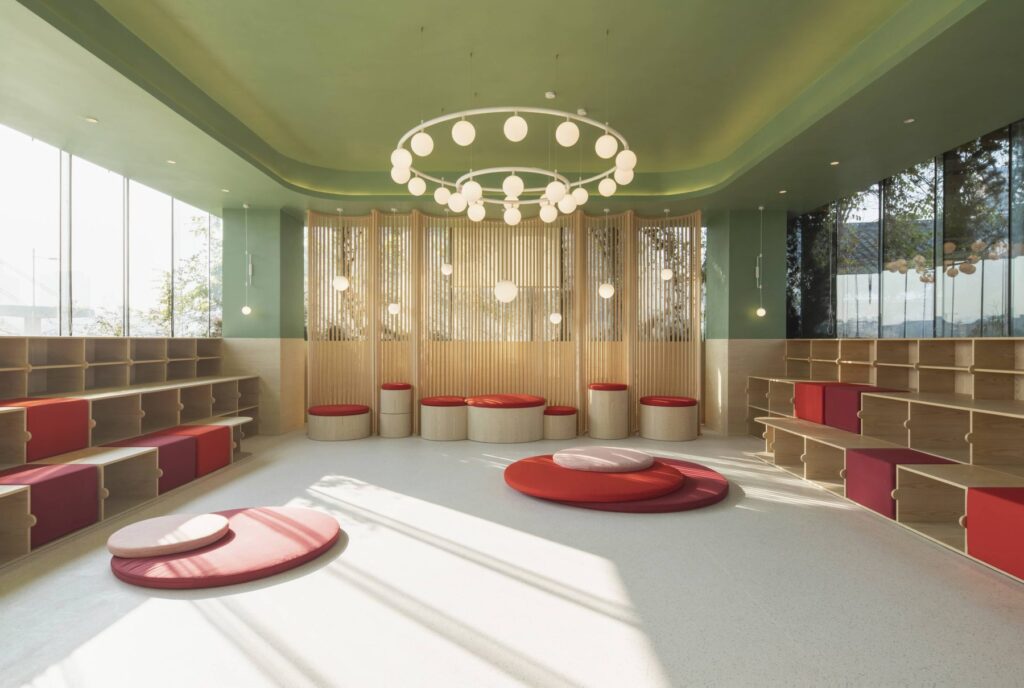
Could you expand on the Bund Post Office project? Is it a working post office, as well as a shop and events space?
Angela: Yes, there is a functioning post office, as well as those other aspects. Even for our clients, this was a very experimental project. They knew they wanted to bring back the importance of the post office to the area, and we worked with them to narrow down what other elements that they wanted to incorporate so that we needed up with a retail space and event capacity. Their emphasis has been on flexibility and versatility, so if they try it and it doesn’t work, they can reconfigure for other uses.
Yihan: The main functions are a post office on the first floor and then there is a retail space with many different gifts for purchase spread across the first and second floor. Finally, there’s a kids hang-out and event space on the top floor.
It looks like all of the fixtures and fittings for the Bund project were custom designed for the space?
Angela: Yes, everything is custom made for that project and most of the furniture is built in. It’s not the biggest space, so it made more sense to work that way. In the research phase of the project, we looked at the history of the area and the importance of the post office, but we also looked at old photographs of British post offices. We pulled nods from some of those photos, like elements of the brass detailing for the post office area, but we also noticed that architecture back then worked a lot with repetitive motifs. We liked that idea, but also wanted to make something more friendly because of the emphasis on children’s use in other parts of the building. We decided on a scallop shape motif and used it in a similar method to the vintage photographs we looked at, but manifested in a more contemporary form.
It’s such an interesting process. Let’s jump to Helsinki and your Teemaa project. Could you speak about the research that informed your decision to focus on this raw vs refined dichotomy for a new Nordic-Asian tea house aesthetic?
Angela: With Teemaa, we were inspired by the clients and their business. At the end of the day, our research is in the service of creating a space. It’s not a PhD with years of research. We need to find interesting ways to look into and tell stories, but we also need some shortcuts. We asked the client to send us photographs of their tea-sourcing trips to China. We noticed similarities in the photos: large metal basins, huts made of scrap wood, brick outdoor stoves for tea roasting. It was raw and rustic and it caught our attention. On the other hand, when we were in the shop talking about tea, the language was very specific and refined. There’s such a dichotomy to the description of the production processes and the finished products, the raw and the refined, and that really appealed to us. Once we had this concept in mind, the aesthetic decisions emerged from that. We didn’t set out to make an ‘Asian’ tea house. It was a completely different starting point.
Yihan: Every time we do a new kind of project, we ask ourselves: have we seen this before? We’re always thinking about what new ideas we can bring to certain typologies of design. Clearly, we both have Asian backgrounds, so we grew up with tea culture and we have an image of what an Asian teahouse looks like. But what we tried to do is differentiate between what we’ve seen before. After we finished the project, I was so happy to hear feedback from our client. They said that they now have many new customers from Japan, Korea and Vietnam, which is a good sign. We created a contemporary new way to present tea culture without resorting to cliches, and it’s attracting people from many cultures who all share an interest in tea. Because we looked into the core of how the tea was made and what materials tea farmers use, we designed a space that everyone who loves tea can relate to.
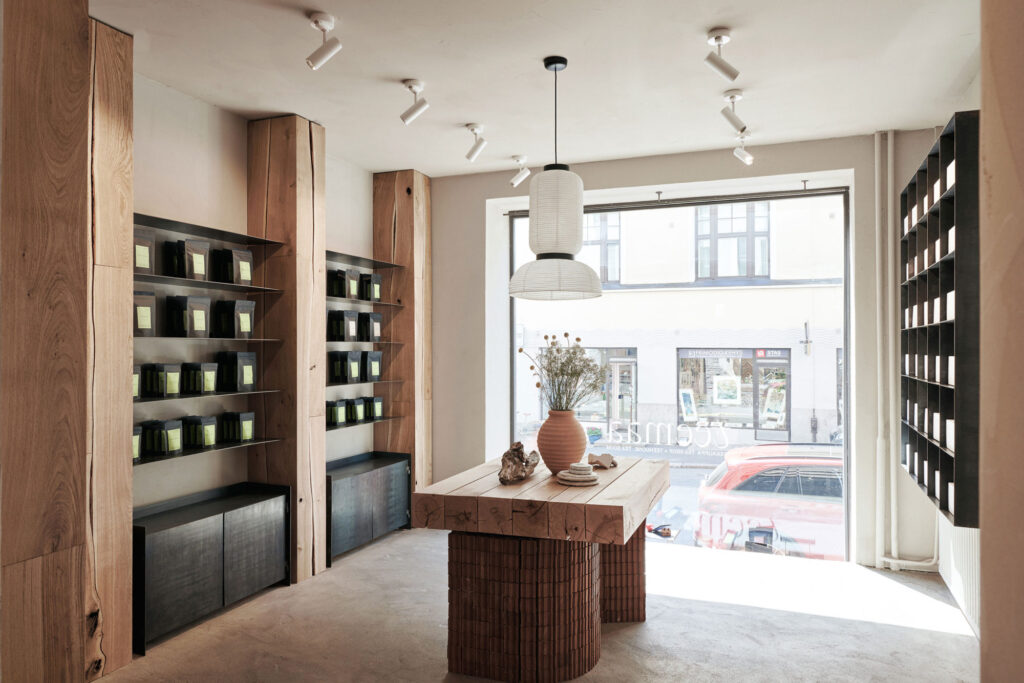
So, this is clearly where the ‘fusion’ comes in. It’s not that you’re trying to create a Nordic-Asian design for a teahouse, but because you’re going through research processes, you end up with something original because it’s specifically tailored to the client’s needs. Connected to that, I know you do custom furniture, but also branding and graphics. Are you working towards a one-stop-shop approach?
Angela: We started doing branding because it was a need that many of our clients identified. During the research process, we also help clients figure out their business needs. If it’s a renovation project, what do they want to bring in that’s new. If it’s a new business, what is the core of that business? And nowadays, the answers to those questions closely connect to branding.
Yihan: We’re interested in a holistic design process. We start with strategy, figure out a vision for the client and then bring in different skills for each project depending on the need. If you have many different companies working on one project, it’s easier for the vision to get lost or diluted. Also, we’re of a younger generation that really values everyone who works with us. We credit everyone who works with us on our PR sheet, for example, and I think that is very representative of our company’s values.
I’m curious about the similarities and differences from your experiences working between Finland and China?
Angela: In Finland, there is full capability to do any type of project, but the attitude is more conservative. It’s a little bit tougher to find people to take risks for fear of failure. In China, by comparison, the market is so saturated that companies are willing to experiment with you. Part of the reason is that time costs more money in Finland so if you fail it feels like it’s more serious. And sourcing certain materials here costs more time and money, too, so in many ways it’s not surprising that the nature here is to be more conservative.
Yihan: Surprisingly, manufacturing prices are starting to level out between China and Finland. Costs are increasingly similar, but the attitude is different. Partly, this is because of a difference between population and market sizes. In the Nordic countries, if you locate a restaurant in a nice neighbourhood and do a good interior design, you’ll probably be ok. But in China, you might have thirty restaurants all on one street. Because it’s super competitive, you have to take risks and find new ways of attracting customers. So the markets are very different.
Let’s finish with a bit of a preview of your current projects.
Angela: This year and 2023 will be exciting for us. We had a lot of work in the pipeline, especially in China, and many of these projects got put on hold because of Covid lockdowns. Hopefully we’ll be able to publish these later this year and next year. We’ve been working mainly on hospitality and retail, and pushed ourselves outside of our comfort zones, so it will be nice to share this work with people soon.
Yihan: At the moment, we’re increasingly interested in doing work to try to share something of the Nordic values in east Asia. For example, to show younger Chinese people who might be overworking that lifestyle doesn’t just mean nice objects or products.
Angela: Nordic design used to be very focused on thinking about materials, but now the conversation is expanding to include Nordic values as well. Finland is really good at things like work-life balance. All this is connected to lifestyle and so we’re increasingly looking for ways to translate these values into our design projects.
Yihan: In the long term, we see this as a more meaningful way to do design.
